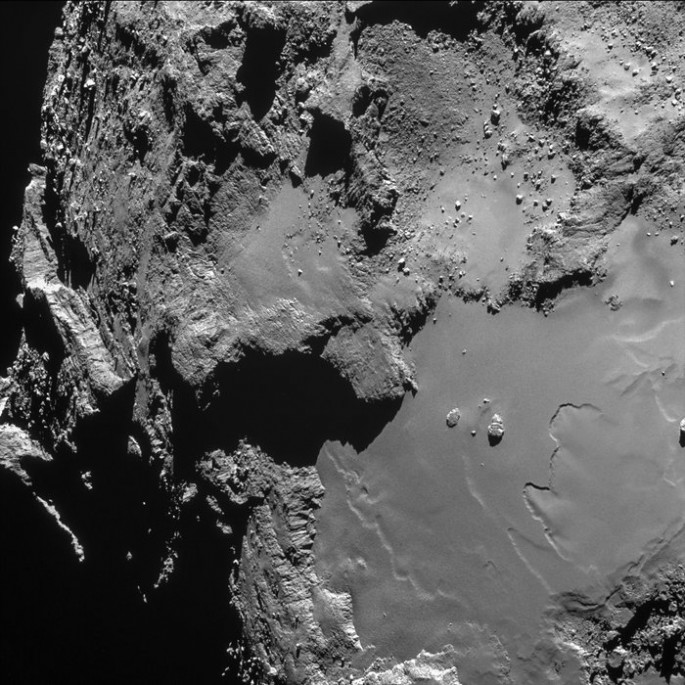Scientists believe that comet 67P/Churyumov-Gerasimenko can host living organisms that has been orbiting by comet hunter Rosetta spacecraft launched by the European Space Agency since August last year. This is also the first comet that a lander has touched down on its surface to study its terrain and composition.
According to top astronomers who has been intensively studying data and images obtained by the Rosetta spacecraft and the Philae lander, they believe that the comet can support micro organisms where they even suggest that comet 67P is even more hospitable for life as opposed to Earth's polar regions.
Scientists believe that the comet's unique features are telltale signs of the presence of living organisms including its body mass, black crust and icy core including its distinct craters and surface with huge boulders.
According to Max Wallis of the University of Cardiff and Chandra Wickramasinghe who is the director of the Buckingham Center for Astrobiology, they believe that the comet's features determine the composition of ice and organic material that are produced when they are exposed to the sun which micro organisms can thrive.
Wallis will present their findings particularly that the crater lakes on the comet's surface are apparently refrozen bodies of water that are just covered in debris that generate ice fractures below the comet's surface.
He also adds that Rosetta already obtained evidence that the comet supports geological processes that can be conducive for microbial life compared to the Arctic and Antarctic regions.
The organisms were able to survive the comet's harsh environment by possessing anti-freeze salts to adapt to temperatures below -40 degrees Celsius. When regions in the comet were touched by sunlight, weak gas emissions were observed by Rosetta within 500 million kilometers from the sun, where this temperature was recorded.
Rosetta's infrared images also revealed complex organic molecules that are strong evidence for life on the comet according to the two scientists.
Rosetta's Philae lander touched down on the comet on November last year, where water vapor was discovered emanating from the surface of the comet where it is very much different from those of Earth's.
Wallis will be presenting these findings today at the Royal Astronomical Society's National Astronomy Meeting.





















